Pure Chablis: The Distinct Identity of Grand & Premier Cru Climats of Burgundy’s Other White Wine by the Talented Guillaume Michel in 2019 (9-Bottle Pack $399)
Most growers in Chablis produce wines in two of the region’s four sub-appellations and many do it in three, but very few make wines in all four. Louis Michel & Fils is one of the few and this package is a pinnacle cross-section of the styles produced by a respected house in a venerated vintage like 2019.
For much of its history, Chablis has stood on a climactic knife’s edge, gambling on whether or not the Chardonnay crop would ripen in Burgundy’s northernmost wine district. Oil-burning smudge pots were once a familiar sight in the spring to prevent frost from harming young buds. But so profoundly has the changing global climate affected the region that there are now those who wonder if conditions will ultimately warm to a point where Chablis loses the cool-weather qualities that make it so distinctive. If so, we may be experiencing the Golden Age of this ethereal golden wine, and 2019 is a case in point.
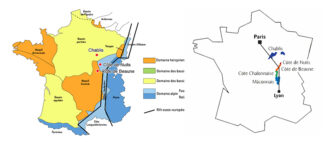
What Lies Beneath
Chablis with shellfish is a classic culinary matchup, so it’s beautiful irony that Chablis owes its very existence to this variety of marine life: In 1904, agronomist Georges Chappaz noted an abundance of tiny comma-shaped fossils (Exogyra virgule) in the subsoils of Chablis, forming banks of limestone. These fossilized shellfish, first observed in Kimmeridge, England, originated in the Late Jurassic era around 145 million years ago and Chappaz classified it as Kimmeridgean soil. It is so prevalent throughout Chablis that it can often be seen breaking the surface, as it does along the shoreline of Dorset in the famous white cliffs.
“The vineyards of Chablis have a sole religion: The Kimmeridgean,” writes Jacques Fanet in ‘Les Terroirs du Vin.’ In fact, the sedimentary basin in which the region sits is unique in Burgundy; once submerged by an ocean, Kimmeridge clay is intermixed with rich grey mudstone, forming the basis of Chablis’ terroir and accounting for the wine’s renowned purity, expressed in an array of sophisticated undertones—especially in Chablis’ unique minerality.
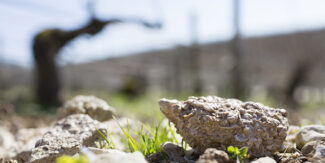 Kimmeridgean subsoils of gray marl alternating with bands of limestone rich in fossils of Exogyra virgula, a small, comma-shaped oyster.
Kimmeridgean subsoils of gray marl alternating with bands of limestone rich in fossils of Exogyra virgula, a small, comma-shaped oyster.
Acid Trip: Chardonnay in Chablis
Chardonnay finds Valhalla in Chablis, and it owns exclusive rights to the AOP—no other varietal is permitted in the four sub-appellations, Grand Cru, Premier Cru, Chablis (the classification most widely available) and Petit Chablis. Even the entry level-wines display the region’s characteristic northern-clime steeliness and wet-stone backbone although these simple wines are not equipped for aging and are best enjoyed shortly after release.
The height of terroir expression that Chardonnay achieves in Chablis is unmatched in France, and arguably, anywhere else in the world. A result of a cool climate (closer to Champagne’s than the warmer Côte d’Or to the south) combined with technique—steel-tank fermentation and a frequent disdain for malolactic fermentation allows the wines to be fruity, acidic and textured. The more hallowed crus, with vineyards at higher elevations or closer to the Serein River, may use oak for aging, but even then, richness is not necessarily the goal that it is among the Côte de Beaune’s blockbusters; in Chablis, winemakers seek to temper some of the sharpness that may define Chablis from the lesser categories.
Louis Michel & Fils
“CHABLIS DES AMATEURS”
Folks who say ‘yes’ to the magic of Chablis will appreciate the things to which winemakers Jean-Loup Michel and his partner/nephew Guillaume Gicqueau-Michel say ‘no’: Oak, bâtonnage and added yeast. Since 1970, fermentation has taken place entirely in stainless steel to preserve the essence of the Chardonnay grape—Michel & Fils is perhaps the best-known proponent of entirely oak-free wines, even in his three Grand Cru offerings. Bâtonnage—the stirring of the lees to make the wine fatter and richer—is atypical in Chablis, and at Michel & Fils, unheard of.
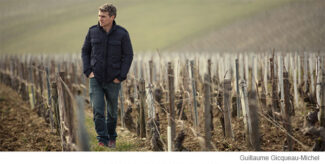
The Michel family has been a presence in Chablis since 1850. Situated in the heart of the village, the estate covers 60 acres that spread across over the very first slopes that were discovered by Cistercian monks in the 11th century and include three Grand Crus (Grenouilles, Les Clos, and Vaudésir), seven Premier Crus (Montmain, Forêts, Butteaux, Butteaux “Vieilles Vignes”, Vaillons, Séchets, Fourchaume and Montée de Tonnèrre).
The domain also produces village-level Chablis from twenty named communes and a Petit Chablis; offering wines from all four sub-appellations make Louis Michel a rarity among local producers.
2019 Vintage: Concentration and Complexity on All Tiers
Louis Moreau, president of the Chablis Commission of the Burgundy wine board, is 2019’s most vocal champion, announcing, “We have produced a top-quality vintage.”
Budburst was about two weeks earlier than in the copious 2018 vintage, and a cold spell through April that reduced the final yield, which was down about 40% over the previous year. The stressed vines bore only a single bunch of grapes per bud rather than the usual two or three.
It was an unusually dry summer with heat spikes in late June, late July and early August. Older vines suffered less because of their established root systems while parcels on shallow and stony soils were more severely impacted. The temperatures fell a little in August, but conditions remained dry and harvest began on the 11th of September and lasted ten days, impressively quick for Chablis.
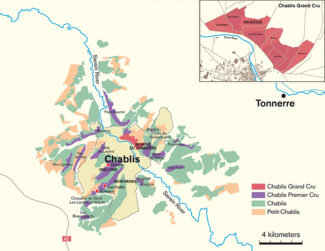
The Grands Crus: Keeping Potential
The ne plus ultra in the region, Chablis Grand Cru, represents only about 1% of total Chablis production; it is comprised of seven climats within the commune of Chablis itself and in the hamlets of Fyé and Poinchy on the right bank of the Serein River, which runs to the northeast of the village of Chablis. The names of the vineyards (Blanchot, Bougros, Les Clos, Grenouilles, Preuses, Valmur and Vaudésir) feature prominently on labels due to the distinct characteristics of each, and are found at elevations between 325 and 825 feet for a total of about 250 acres.
The signature of a Grand Cru Chablis is the perfect balance of fruit-based fattiness and bracing acidity; it is a refreshingly dry wine with nuances based on the individual vineyard, but the common notes to expect include the elusive scent of freshly-sliced mushrooms and a discreet touch of honey. Most impressive in a wine with limited exposure to the preservative qualities of oak is its ability to age and improve, ten years minimum with fifteen years or more well in the realm of possibility. With maturity, the earthiness and nutty-qualities of Grand Cru Chablis increase as forward citrus fruit fades and an intriguing spiciness takes over.
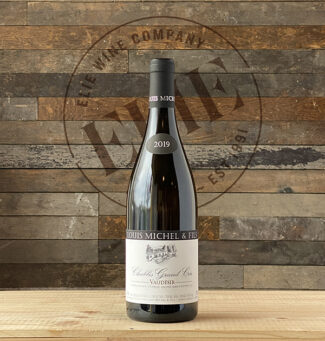 Louis Michel & Fils, Chablis Grand Cru Vaudésir ($90)
Louis Michel & Fils, Chablis Grand Cru Vaudésir ($90)
Vaudésir sits in an east-west valley within the Grand Cru hill overlooking the town of Chablis. The vineyard covers 40 acres of steep land above the Grenouilles Grand Cru site on the hill just east of Preuses; it is shaped like an amphitheater and is cut through by a track known as the Chemin des Vaudésir, giving it a double orientation, with half of its vines facing south and the remainder facing southwest. This topography helps to distinguish Vaudésir from other vineyard site, as the steep slopes provide some protection from northerly winds and vines instead benefit from good exposure to sunlight. The wine reveals notes of rhubarb and acacia flower with buttery, brioche aromas and a faint hint of coconut.
*click on bottle for more info
The Premiers Crus: Structured with Good Length
Longevity is not only a hallmark of this appellation’s palate sensation: more than half of the climats entitled to wear the ‘Premier Cru’ label had their present-day names by 1429. Chablis Premier Cru represents about 14% of Chablis production, with sites scattered on either side of the Serein River and covering around 2000 acres. As in Bordeaux, where the location of the vineyard compared to the Dordogne and the Garonne determines the style and quality of the wine, the case is similar in Chablis, where left bank wines tend to be more floral and fruit-centered whereas right bank wines are steely and mineral-focused.
Further illuminating the subject is Marc-Emmanuel Cyrot of Domaine Millet, who observes, “The right bank provides complex, well-balanced wines, with a maximum of minerality and vivacity. Those on the left bank are very aromatic, with a less full-bodied character.”
Again, as in Bordeaux, this is the result of soil, topography and exposure to the sun: On the right bank, close to the village, many of the well-known Premiers Crus share similar geology, exposition and characteristics with the Grand Crus. To the left of the river, a different style emerges, with many steep-sided vineyards oriented southwest-northeast, east-facing slopes and varying ratios of limestone and clay.
Of the 40 vineyards that fall under the Premier Cru category, 17 are reckoned to be superior, or ‘flag-bearing’ climats. Among these 17, vineyard differences are pronounced and subtle, but with age, the individualism of the respective climats becomes even more apparent.
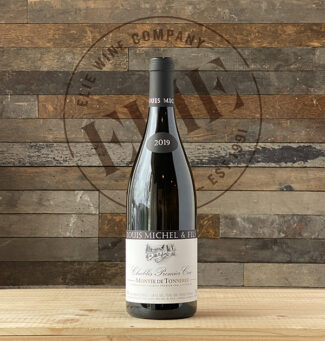 Louis Michel & Fils, Chablis Premier Cru Montée de Tonnerre ($45)
Louis Michel & Fils, Chablis Premier Cru Montée de Tonnerre ($45)
Set slightly back from the Grands Crus vineyards, Montée de Tonnèrre abuts Blanchot, where its moderate slopes, exposed to the west, welcome the sun in the afternoon. The grapes are protected from the East winds and ripen without much effort while the shallow soil, underlain with Kimmeridgean marly limestone, reveals veins of blue clay to gives the wines both minerality and energy. Montée de Tonnèrre is also an umbrella climat that covers approximately one hundred acres and includes Chapelot, Côte de Bréchain and Pied d’Aloup.
*click on bottle for more info
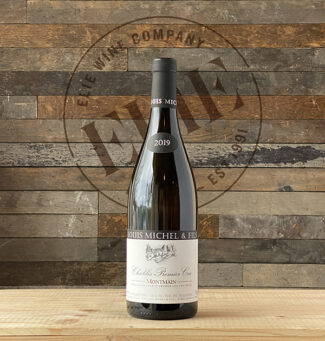 Louis Michel & Fils, Chablis Premier Cru Montmain ($38)
Louis Michel & Fils, Chablis Premier Cru Montmain ($38)
Montmain is both an individual Premier Cru climat sitting to the southwest of Chablis town; it is also an umbrella title that encompasses the Premier Cru vineyards of Forêts and Butteaux. The entirety of Montmains occupies just under three hundred acres of southeast-facing slope in a valley that runs parallel to Vaillons, just over the hill to the north.
From Michel’s four parcels come a lively wine that exudes ripe apple, spicy floral aromas, toasted almonds, anise and a chalky combination of candied lemon peel and damp stones.
*click on bottle for more info
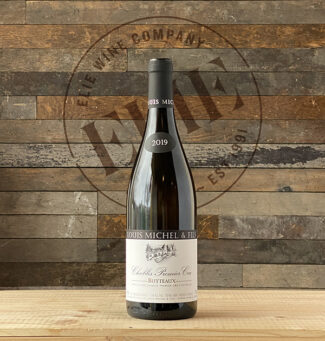 Louis Michel & Fils, Chablis Premier Cru Butteaux ($41)
Louis Michel & Fils, Chablis Premier Cru Butteaux ($41)
From four parcels spread over the steep Butteaux slopes; Michel’s total holdings in Butteaux are a little over seven acres. The wine is immediately elegant with an emerald character; soft, leafy herbs, a flint and Granny Smith apples preceding a thrilling rush of chalky acidity and pithy lemon-lime.
*click on bottle for more info
The Old Vines Enigma
The age of a fruit-producing vine has an almost mystical effect on vignerons, who proudly announce the pedigree of a given parcel, often on the label, when it has reached a certain point, frequently between 50 and 100 years old. As the prevailing wisdom insists, an unusually high proportion of the world’s most beautiful wines are the product of vines in this age group.
Not all winemakers and enologists agree on a guarantee of quality among old vine wines, but what is certain is that they tend to be expensive to work with since everything must be done by hand. Not only that, but old vines (often referred to as ‘Vieilles Vignes’ on the label) are far less productive; a 100-year-old vineyard might yield 2 tons per acre whereas a 10-year-old climat would be more in the range of 20.
In either case, old vines are a fascinating talking-point; a beacon for talent, connection, symbolism and heritage.
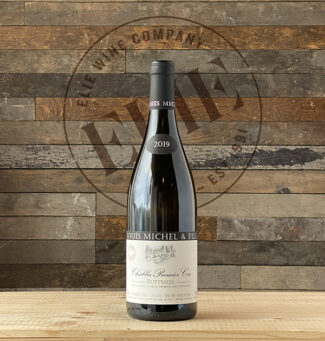 Louis Michel & Fils, ‘Vieilles Vignes’ Chablis Premier Cru Butteaux ($47)
Louis Michel & Fils, ‘Vieilles Vignes’ Chablis Premier Cru Butteaux ($47)
The southernmost of the three Premier Cru climats that make up the wider Chablis Montmain Premier Cru title, the stopes here are steep and the soils rich in chalky limestone. Louis Michel’s two-acre plot is well over sixty years old, with vines planted in 1955. Yields have so diminished that the old vine harvest is vinified and aged separate from the others, as one might treat a Grand Cru. The wine shows notes of condensed milk, acacia flowers and licorice leading to a warm finish with peach jelly and baked apples.
*click on bottle for more info
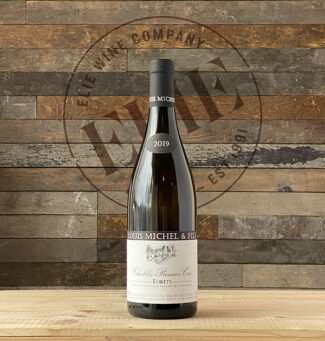 Louis Michel & Fils, Chablis Premier Cru Forêts ($41)
Louis Michel & Fils, Chablis Premier Cru Forêts ($41)
Forêts is a south-facing slope a few miles south of the commune of Chablis; it is delimited from neighboring Butteaux by its terroir. While the two sub-climats share the same Kimmeridgean subsoils, with high proportions of limestone, there is some variation in texture. Forêts soils tend to be stonier and shallower than those in Butteaux with more clay, giving slightly more concentrated mineral characters to the wines.
In Michel’s two parcels, the bedrock is close to the surface—the depth can be measured in centimeters. The resulting minerality in the wine is pronounced; a pure nose of white flowers lemon and oyster shell leads to a rich and supple mid-palate and an expressive finish.
*click on bottle for more info
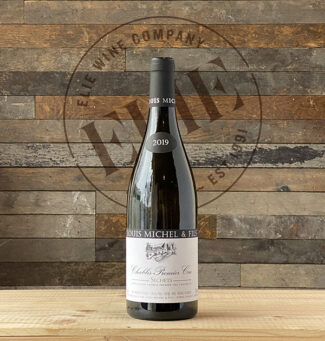 Louis Michel & Fils, Chablis Premier Cru Séchets ($41)
Louis Michel & Fils, Chablis Premier Cru Séchets ($41)
Located on the upper southeast-facing slopes on the western side of the Serein River, Séchets has a generally cool terroir that is widely considered one of the best in Chablis, producing taut, razor-sharp wines. The vineyard has a more easterly aspect than many of the more southerly oriented vineyards in Vaillons, so the vines are exposed to gentle morning sun that is less intense than that felt on the steeper slopes to the west. The cooler microclimate allows a long, slow ripening period that allows the grapes to retain their characteristic acidity while still developing aromatic complexity. Once vinified with Vaillons, Michel & Fils has made a separate Séchets since 2010. It delivers a fine blend of apple, pear, fruit blossoms, chalky soil tones and a nice top-note of beeswax.
*click on bottle for more info
The Village: Mineral and Green Apples
Accounting for 66% of Chablis production, the straightforward village-level appellation is the largest by far; it spans a thousand acres and represents a very pure expression of Chardonnay itself, unadorned by wood; if any oak is used, the barrels are larger and older and do not impart much influence. Instantly recognizable aromas are green apple, chalky minerality and one of the true hallmarks of Chablis, aromas of freshly-turned, dry hay.
Styles may vary from village to village and among younger, innovative winemakers as opposed to those who are more steeped in tradition, but the classic Chablis Village is marked by racy acidity and stony, steely undertones.
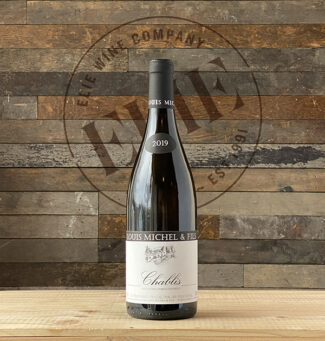 Louis Michel & Fils, Chablis ($31)
Louis Michel & Fils, Chablis ($31)
A cuvée which blends grapes from eight different areas, nearly all from the left bank of the Serein, Lieu-dit Pargues in the Forêts valley, Vaillons and a unique parcel located just below the Montée de Tonnèrre. Vines were planted between 1960 and 1988 and the wine was matured 10 months in stainless steel tanks with the least possible handling. Round, pure, and bursting with ripe apple, toasted brioche, yellow plum with a touch of salinity; the wine is persistent, acidic and finishes with chalky minerality.
*click on bottle for more info
The Petit Chablis: Floral and Citrus Accents
Just as Grand (French for ‘big’) Cru represents the smallest of the four Chablis appellations, Petit (French for ‘small’) Chablis is nearly five times the size of the Chablis AOP, overlapping most of it and extending beyond it. These wines generally originate in lower-quality terroirs and the wines they produce are predictably lesser in quality. Petit Chablis is usually the first to harvest, and from grapes with less hang time comes wine that is simple, refreshing, acidic and bright on the palate. They show floral notes of hawthorn and acacia mingled with lemon-lime and grapefruit over a mineral base that is said to resemble the odor of a flintlock gun.
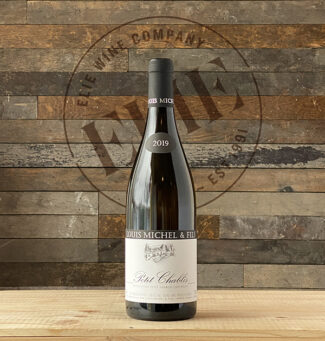 Louis Michel & Fils, Petit Chablis ($32)
Louis Michel & Fils, Petit Chablis ($32)
From right bank slopes where the soils are shallow and stony, though rich in organic matter. Rather than the Kimmeridgean soils that underlie Grand and Premier Cru climats, the limestone here is Portlandian, which is younger and fossil-free, producing wines with more citrus and less chalk. This wine comes from vines planted between 1991 and 1999 and has undergone spontaneous malolactic fermentation, leading to a pale-yellow wine with greenish glints; it is lively with acid and shows apple peel, white flowers, grapefruit and peach.
*click on bottle for more info
- - -
Posted on 2022.04.16 in France, Burgundy, Wine-Aid Packages
Featured Wines
- Notebook: A’Boudt Town
- Saturday Sips Wines
- Saturday Sips Review Club
- The Champagne Society
- Wine-Aid Packages
Wine Regions
Grape Varieties
Aglianico, Albarino, Albarín Blanco, Albarín Tinto, Albillo, Aleatico, Arbanne, Aubun, Barbarossa, barbera, Beaune, Biancu Gentile, bourboulenc, Cabernet Franc, Cabernet Sauvignon, Caino, Caladoc, Calvi, Carcajolu-Neru, Carignan, Chablis, Chardonnay, Chasselas, Clairette, Corvina, Cot, Counoise, Erbamat, Ferrol, Fiano, Frappato, Friulano, Fromenteau, Fumin, Garnacha, Gewurztraminer, Godello, Graciano, Grenache, Grolleau, Groppello, Juan Garcia, Lambrusco, Loureira, Macabeo, Macabou, Malvasia, Malvasia Nera, Marsanne, Marselan, Marzemino, Melon de Bourgogne, Merlot, Mondeuse, Montanaccia, Montepulciano, Morescola, Morescono, Moscatell, Muscadelle, Muscat, Natural, Nero d'Avola, Parellada, Patrimonio, Petit Meslier, Petit Verdot, Pineau d'Aunis, Pinot Auxerrois, Pinot Blanc, Pinot Gris, Pinot Meunier, Pinot Noir, Poulsard, Prieto Picudo, Rondinella, Rousanne, Roussanne, Sangiovese, Sauvignon Blanc, Savignin, Semillon, Souson, Sparkling, Sumoll, Sylvaner, Syrah, Tannat, Tempranillo, Trebbiano, Trebbiano Valtenesi, Treixadura, Trousseau, Ugni Blanc, vaccarèse, Verdicchio, Vermentino, Viognier, Viura, Xarel-loWines & Events by Date
- April 2024
- March 2024
- February 2024
- January 2024
- December 2023
- November 2023
- October 2023
- September 2023
- August 2023
- July 2023
- June 2023
- May 2023
- April 2023
- March 2023
- February 2023
- January 2023
- December 2022
- November 2022
- October 2022
- September 2022
- August 2022
- July 2022
- June 2022
- May 2022
- April 2022
- March 2022
- February 2022
- January 2022
- December 2021
- November 2021
- October 2021
- September 2021
- August 2021
- July 2021
- June 2021
- May 2021
- April 2021
- March 2021
- February 2021
- January 2021
- December 2020
- November 2020
- October 2020
- September 2020
- August 2020
- July 2020
- June 2020
- May 2020
- April 2020
- March 2020
- February 2020
- January 2020
- December 2019
- November 2019
- October 2019
- September 2019
- August 2019
- July 2019
- June 2019
- May 2019
- April 2019
- March 2019
- February 2019
- January 2019
- December 2018
- November 2018
- October 2018
- September 2018
- August 2018
- July 2018
- June 2018
- May 2018
- April 2018
- March 2018
- February 2018
- January 2018
- December 2017
- November 2017
- October 2017
- September 2017
- August 2017
- July 2017
- June 2017
- May 2017
- April 2017
- March 2017
- February 2017
- January 2017
- December 2016
- November 2016
- October 2016
- September 2016
- August 2016
- July 2016
- June 2016
- May 2016
- April 2016
- March 2016
- February 2016
- January 2016
- December 2015
- November 2015
- October 2015
- September 2015
- August 2015
- July 2015
- June 2015
- May 2015
- April 2015
- March 2015
- February 2015
- January 2015
- December 2014
- November 2014
- October 2014
- September 2014
- August 2014
- July 2014
- June 2014
- April 2014
- March 2014
- February 2014
- January 2014
- December 2013
- November 2013
- October 2013
- September 2013
- August 2013
- July 2013
- June 2013
- May 2013
- April 2013
- March 2013
- February 2013
- January 2013
- December 2012
- November 2012
- October 2012
- February 2004
Search



